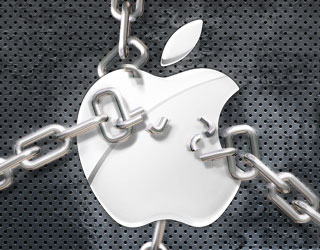The Basics: Mac Security

So you purchased a Mac and your surfing the web feeling safe, right? No pesky viruses, no worries about encrypting your data. Apple computers are immune to all those wonderful tricks of hackery, right? NO! Apple computers are just as vulnerable to online attacks like malware. A recent survey from Secunia ranked OS X one of the most vulnerable operating systems. Now don’t lets this prevent you from heading out and snatching up one of those sexy aluminum unibody Macs because today we will be discussing how to get your future Mac secured.
Regardless of the manufacturer, computers store gigabytes of information about our e-lives. Be it our favorite websites, school papers or maybe even email. We all have some type of personal information stored on our computers and without properly protecting it you could be in a world of hurt. In this two part series, I’m going to discuss details to keep your Mac computer safe from intrusion or information theft.
You can download and read the full Secunia Half Year Report 2010 PDF here.
Passwords:
I can not even begin to describe to you how important a having a secure and cryptic password can greatly decrease the odds of your computer being compromised. Fortunately, the good people at Apple make this simple. When you setup your Mac for the first time it will ask for a password. Note: The password field is not required but is strongly suggested. Please do create a password for your account it could save your Internet life!
Having a password on a Mac is crucial. Not only does it set permissions for your home folders. I.E – Music, Pictures, Documents, etc. It will also make sure no one is using some pesky malware to try and compromise your system. Anytime an application installs on the Mac it asks for a password and without a password something like a virus could easily get on your computer and start causing trouble. So if you don’t have a password now do it!
Turn off those services:
Apple has introduced some really neat features into the OS X that allow it to share files with other Macs or even PCs. While some of these services can be convenient some can leave OS X insecure and very vulnerable to attack. Head on over to System Preferences and under Sharing uncheck any service you do not use. A few that should always remain disabled are Remote Login, Remote Management, and Screen Sharing. If you’d like to know more about these services stick around for a future article. For now turn them off!
The Security Preference Pane:
In System Preferences you’ll find a Preference Pane named Security. Although I wish it included more options the right ones being enabled should give you a great edge on security. Under the general tab you’ll find a few options. Match your settings to the ones you find bellow. The settings that need to be enabled include asking for a password after the computer wakes up from sleep, disable automatic login, require a password to unlock each system preference pane and secure virtual memory.
In the FileVault tab you’ll find settings for enabling home folder encryption. What this means is if your Mac were to get stolen the files in your Documents, Pictures, Music, etc. would be encrypted unless the thief knew your password. Turning this on is not for everyone. Evaluate how secure your files need to be and if your computer is at risk of being stolen. FileVault can take a while to setup depending on the size of your home folder. It will also disable Time Machine unless you are logged out of your user account. In most cases it is safe to leave FileVault off.
Lastly, the Firewall. This is self explanatory. It monitors internet traffic in and out of your Mac and decided to allow or deny. Just click start and your good to go. For a little more security click the advanced button under firewall and turn on stealth mode.
Software Update:
Just like in Windows every once in a while Apple releases updates for OS X. These updates could be as simple as enabling a new feature in Safari or more common security updates for OS X. These updates are crucial to keep your Mac experience safe. One feature concerning Software Update is that it only checks for updates once a week. This could potentially leave your computer vulnerable to attack for up to 6 days. A simple remedy is to set Software Update to check for updates daily. Head on over to System Preferences then software update. Make sure the updates are set to check daily and enable automatic downloading of the software. This will ensure when updates are available they will automatically download and ask to be installed when the download is complete.
So there you go. You’ve made the first steps to securing your Mac. Be sure to check back later for the more advanced security techniques. Have comments/questions? Leave them below or join our live chat.